How to spend less time organizing your agenda with Bookings, FindTime, Cortana & MyAnalytics
How to spend less time organizing your agenda
Keeping our calendars as a representation of our daily agenda is crucial, especially when we have more meetings than ever before. In this blog post, I will give you some ideas on how to let smart tools integrate with Outlook so that you need to spend less time scheduling meetings and have enough time to get the work in between your meetings done.
Use Microsoft Bookings to schedule meetings with customers and the community
Included in my Microsoft 365 license comes Microsoft Bookings, a service that lets externals book appointments via a website in free slots depending on your availability without letting them see your actual calendar. It automatically sends invites, confirmations, and reminders and integrates perfectly with Microsoft Teams meetings. Bookings is available for all customers with
- Microsoft 365 Business Premium
- Microsoft 365 Business Standard
- A3
- A5
- E3
- E5
licenses, and you will need Outlook on the web or Outlook mobile have enabled, which requires your mailbox to be in Exchange Online. The bookings calendar will create a new calendar in Exchange Online and a related entry in Azure Active Directory. You can add scheduling policies and define time increments to be able to book, lead time upfront of a meeting, and if you need to have time in between of meetings.
I added a link to my bookings page to my Outlook signature and told my customers about it. Whenever a new customer-to-be or someone from the community wants to schedule a meeting, I reply with this link, and bookings does the rest for me. It reflects my availability, and I can exclude times from it as well. The beauty of it is that I do not need to send emails back and forth about scheduling a meeting anymore. This makes scheduling fast and effortless and looks very professional as well. Find more information here.
FindTime to schedule meetings with larger groups and let them vote for a date
FindTime is an Outlook Add-In by Microsoft, which let’s sends some proposals for meeting times to one or more persons. You need to select those times by yourself and that the recipients will vote on the times if they can make it or not and what of the options would be their preferred time slot to meet. This way, you can create a poll and see which time slot you should pick because all or at least the majority of invitees confirmed the upcoming meeting.
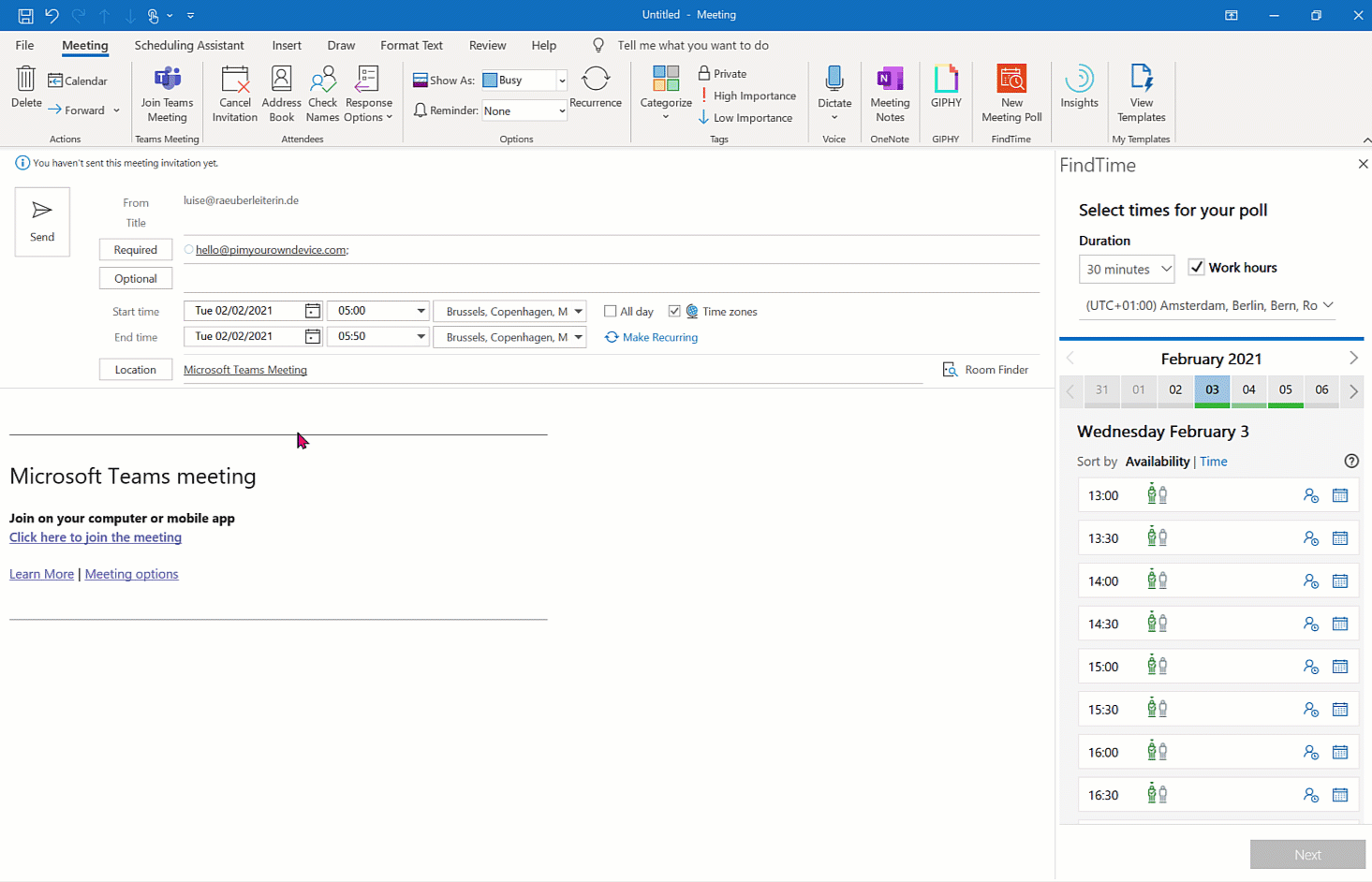
Use Cortana to schedule time for weekly meetings
I use Cortana to schedule 1:1 weekly meetings that do not need to be on a predefined time/weekday each week, but can be handled flexibly, and also use it for (virtual) coffee meetings.
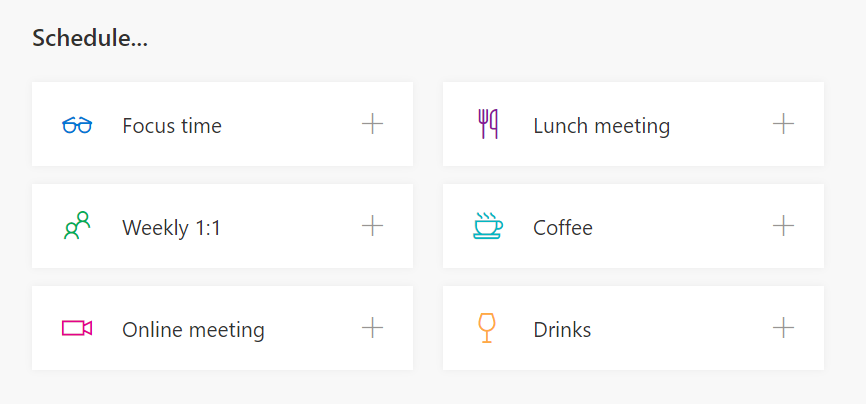
After clicking on the tile, my Outlook client opens a new email with cortana@calendar.help in cc and a message to Cortana to book a meeting for 30 minutes every week. You can, of course, change the value and the default value as well. Cortana will now send email an email to the recipient and propose three different free timeslots and get back to you after the scheduling was successful.
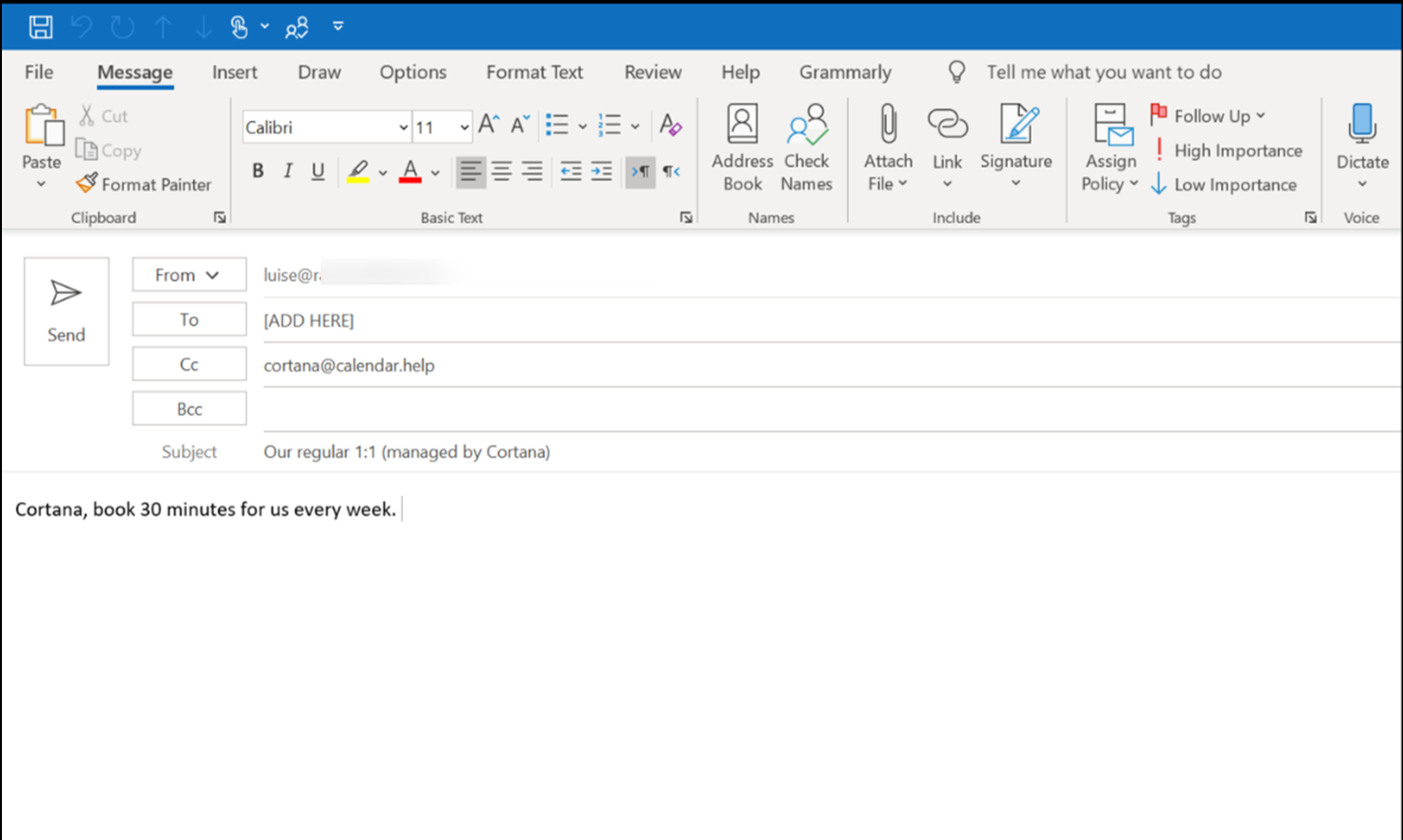
You might have noticed that you can also book focus time with Cortana, but I prefer to do this with Insights/My Analytics:
Use My Analytics/Insights to increase awareness, protect your time, and don’t miss staying on track
I use a service called My Analatics to protect my precious time, makes me aware of unhealthy working habits, support me in staying in touch with people relevant to me and increase my reach
How does My Analytics work?
My analytics is a personal productivity tracker. Think about it as your Smart Watch, which tells you to go for a walk, stand up regularly, or measure how fast you run (when you go for a run) to establish healthy habits.
My analytics works with 4 elements:
- MyAnalytics dashboard - which is where you can see how you spent your time over the four weeks across four different plans: focus, wellbeing, collaboration, and network
- Insights Outlook add-in - gives you suggestions based on your working behavior
- Digests - This is a summary of the last week with actionable insights
- Inline suggestions in Outlook - recommendations to improve your work patterns
Ever wondered how it can already be 5 pm and how the heck you spent your day? Have you been busy all day long but can’t tell how 9 hours could have passed, but you still couldn’t check off your most important tasks? Well, we all know those days and even weeks. The reasons are pretty obvious:
- poor planning and prioritizing of tasks / unclear commitment which tasks need to be completed today
- too many meetings that don’t add value to your work
- things get into the way of your planning, and it’s hard to stay on track
- it’s challenging to change habits
To tackle these, I do the following:
- All my tasks will be reflected in Microsoft To Do:
- personal tasks
- tasks that live in planner but can be accessed via To Do
- emails from external people that contain task, which can be accessed via To Do
Within To Do, we can find a very interesting feature called “My Day,” in which you daily commit to the tasks you want to work on today. Learn more about it in my blog about reasons why I fell in love with Microsoft to Do. If you feel like having already too much on the plate, it can be useful to dig a little bit deeper into How to stop overcommitting
- I decide very carefully which meetings I attend. If I can’t learn something in a meeting that I work towards my team’s objectives or if I can’t contribute in a meaningful way, I will not participate. If you want to know more about why and how I do this, read my blog post about digital clutter and how we use our time
To protect my focus time, I use My Analytics:
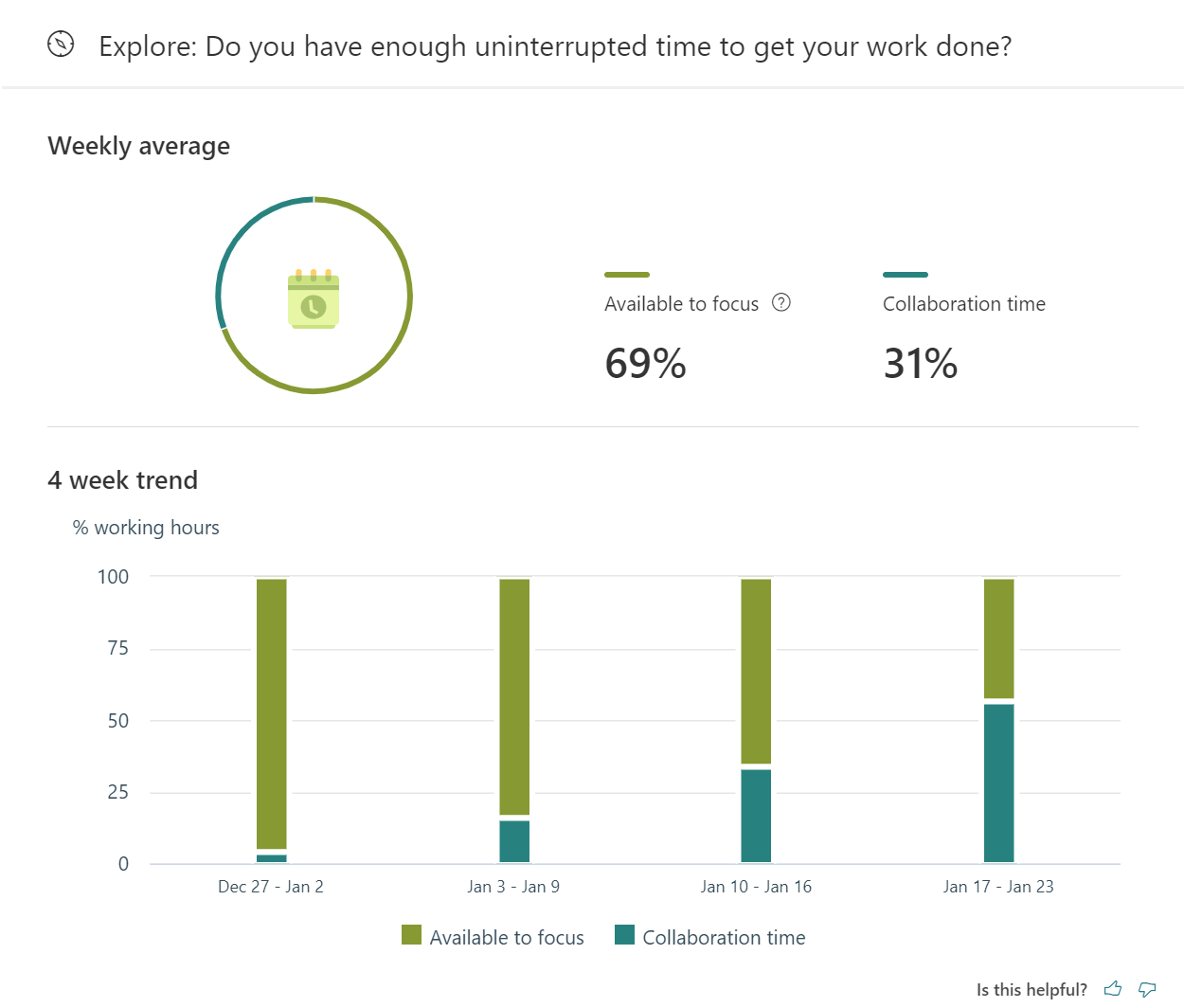
The Focus Plan gives me an overview of what happened in the past four weeks and encourages me to change what didn’t go as planned. It lets me schedule my focus time (which will automatically set my Microsoft Teams status to DND) and review overlapping events in my calendar, not to double-book.
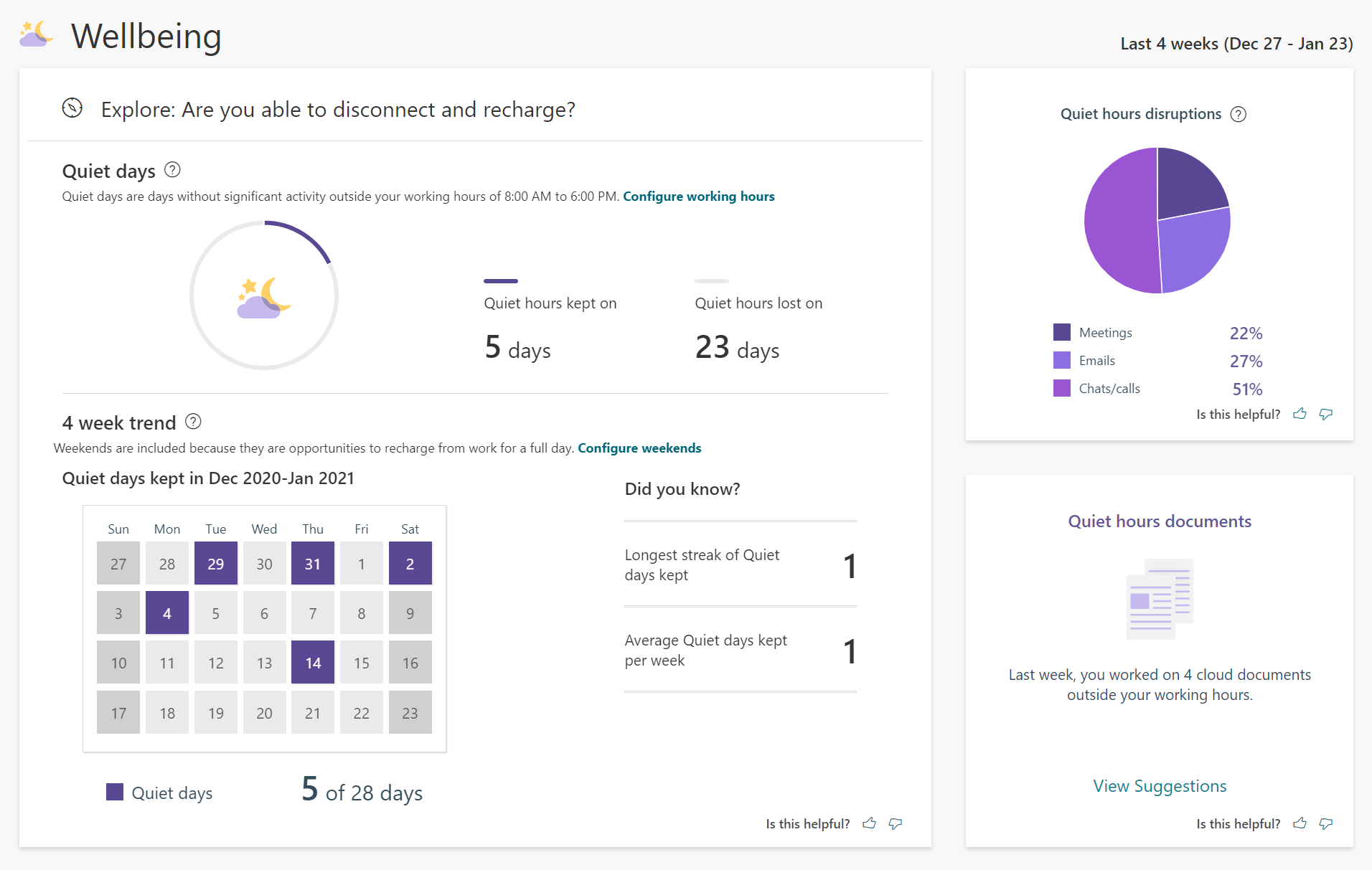
The Wellbeing Plan gives me insights into my ability to disconnect and recharge my inner batteries. It calls me out on working crazy hours and suggests taking real breaks. Being confronted with real numbers instead of just guessing is very valuable because I am very hesitant about taking time off.
Ever wondered if the time you spend with meetings is adding value? The collaboration plan confronts me with my meeting habits. If I joined on time, got distracted by writing emails during meetings, if I added a Teams link or if my meetings overlapped. This report is gold because it reminds me that I am responsible for getting the most out of the very precious time when I meet with others. If we try to multitask, need to join late, and leave early, I will probably prioritize other things. I find it very helpful to readjust my commitments and make more informed decisions on what to work on.
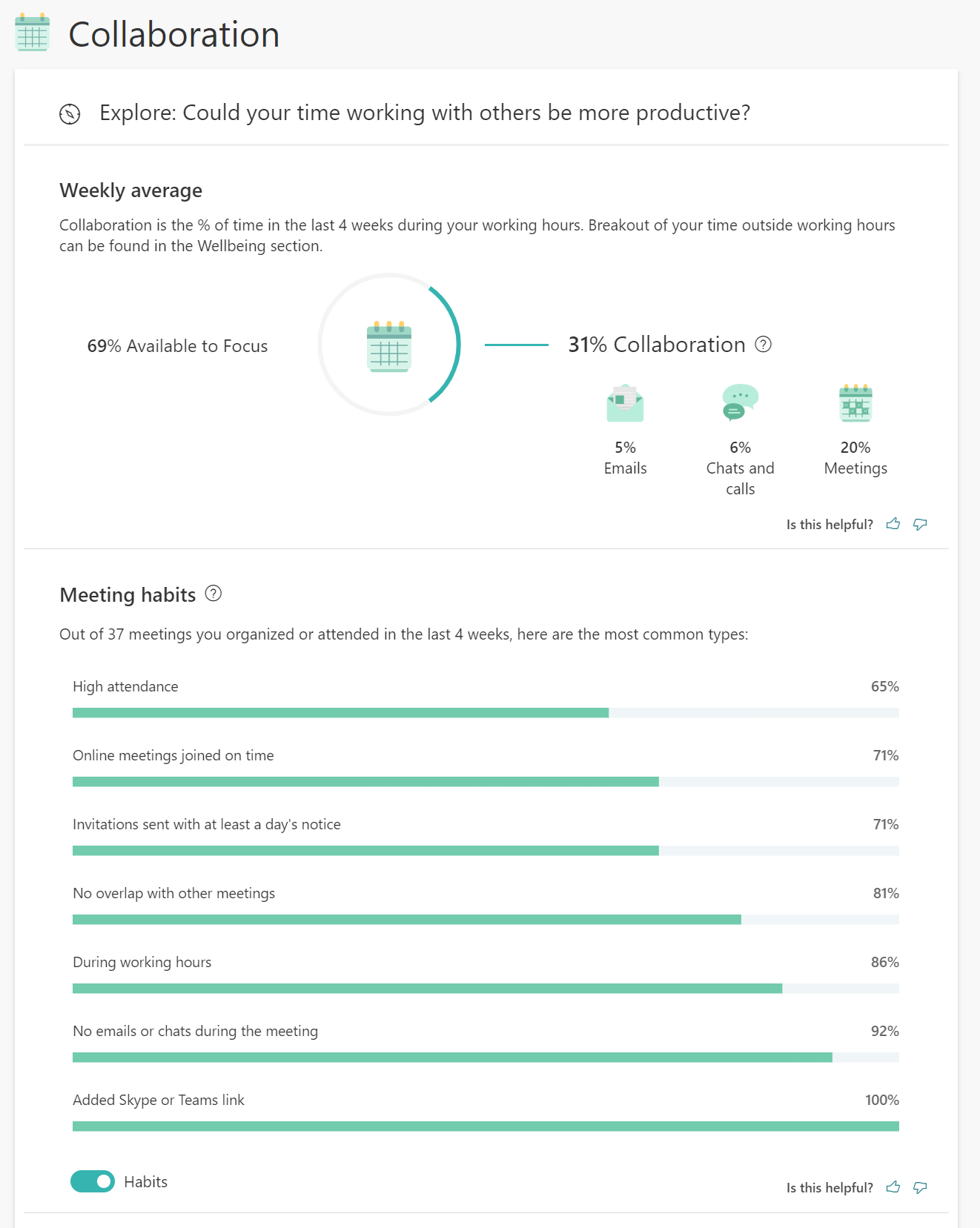
Networking plan makes sure you don’t stay in your filter bubble only but expand your network.
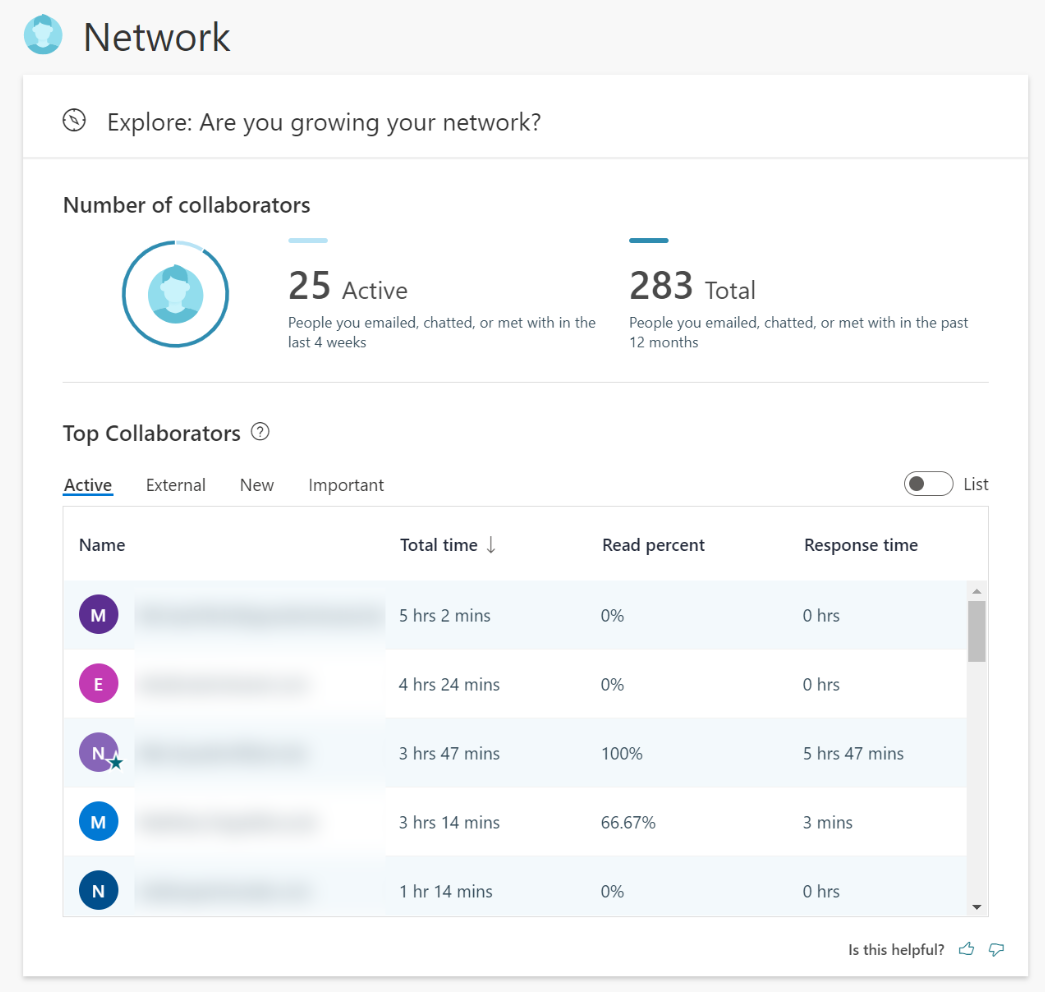
- Things that get in the way
Now that My Analytics/Insights is protecting my focus time, evenings and nudges me into healthy meetings, it is less likely, that things conflict with how I planned my time. Of course, we all know those emergency cases, but they don’t occur every single day.
- Habits
Well, changing your habits is hard. Patterns are not only well-trained and familiar; they also originate in some common beliefs/ mental models. If you want to learn more about those, read the article about Why Microsoft 365 adoption projects fail on docs.microsoft.com - collaboration with Michael Roth
If change is that hard- how can we still master it?
We need to stick to a process:
set a specific goal Without a clear purpose, you can’t improve and can’t track your progress. Set a goal like “Over the next two weeks, I will batch process my emails at 10 am and 3 pm.”
plan
It would help if you were very clear and concise about why you want to do that and what drives you to set up this goal. Our example could be that it reduces your stress level, leads to fewer interruptions, and more focused working hours.
- practice
Now comes the most challenging part - DOING what we planned. And now My Analytics comes into play: For example, with its Outlook Add-in, that prompts me to make an appointment with myself and book focus time. I can also book focus time regularly in the Dashboard, but it comes very handy in Outlook, where we still receive and process our mails and do lots of meeting planning.
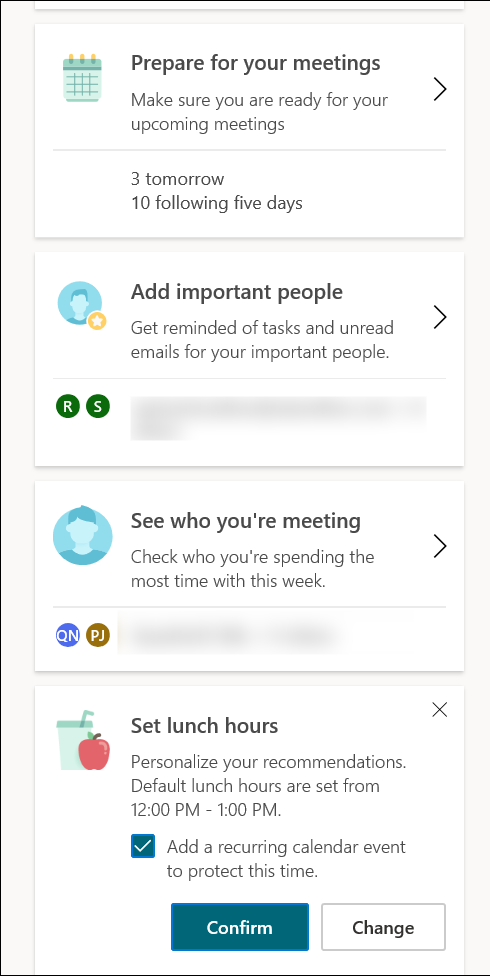
- celebrate
Celebrating the small wins is essential - we can reflect on our journey and feel what’s right for us! It is also an excellent opportunity to share what helps us to inspire more people.
Feedback and what’s next
Using a combination of different tools for different workloads helps me getting the most out of my day - which can be quite busy. I would love to know how you schedule your meetings, protect your focus time and manage to get your work done! Which tools do you use, which approaches help you?
You May Also Like
Improving a Web Part with PnP.js and React Webhooks
I promised, I’d improve my initial draft. So I want to address three …
Building my first SharePoint Web Part with SPFx Toolkit
I’ll walk you through how I transformed my standalone JavaScript web …
AI and dinosaurs
Have you ever noticed how almost every kid goes through that intense …






